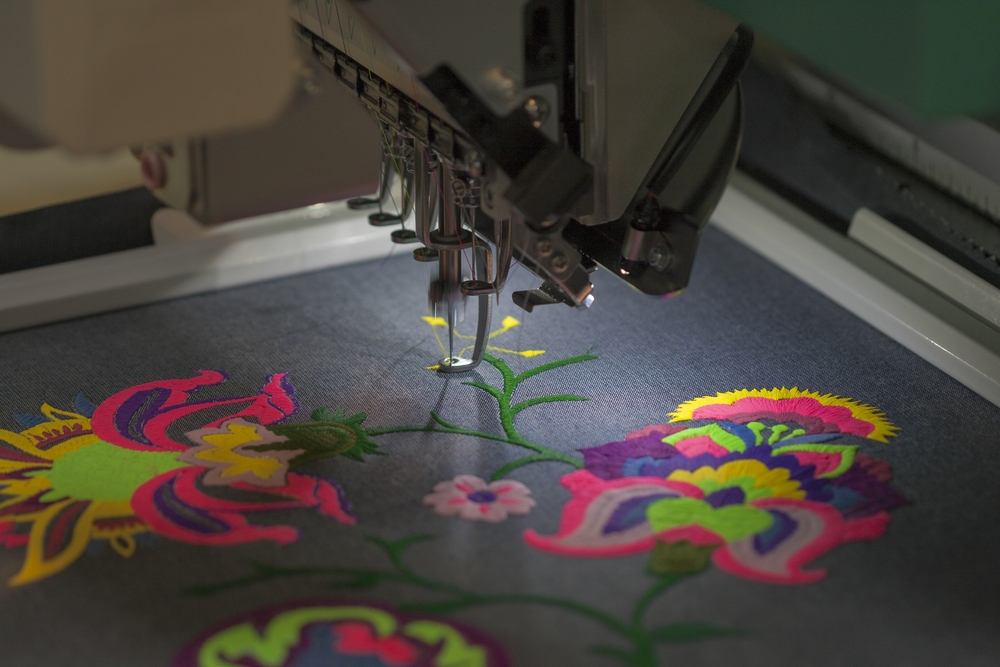Custom Digitizing for Embroidery: Tailored to Your Needs
Custom Digitizing for Embroidery: Tailored to Your Needs
Blog Article
Discover Different Sorts Of Embroidery Digitizing Methods
Embroidery digitizing has progressed dramatically over the years, supplying a myriad of techniques to bring designs to life in the electronic world. The world expands to extra innovative strategies like photorealistic needlework digitizing and the remarkable world of 3D needlework digitizing.
Traditional Hand Embroidery Digitizing
Standard hand needlework digitizing entails the procedure of transforming complex hand-stitched styles right into digital styles for device embroidery. This strategy requires proficient craftsmens to thoroughly assess the handcrafted style and then use specialized software application to recreate it in a digital format. Each stitch, shade, and information should be thoroughly translated to ensure that the significance of the initial hand needlework is protected in the digital variation.
Among the crucial challenges of traditional hand needlework digitizing is catching the ins and outs and nuances of the handmade design. Digitizing for Embroidery. Craftsmens need to possess a deep understanding of various embroidery techniques, such as satin stitch, chain stitch, and French knots, to properly duplicate these techniques in the digital realm. In addition, they need to have an eager eye for detail to ensure that the electronic design maintains the exact same level of virtuosity and workmanship as the original hand-stitched item
Punching Method
To seamlessly change from conventional hand needlework digitizing to the punching strategy, artisans have to now concentrate on converting the detailed digital layouts into guidelines that embroidery equipments can interpret. The boxing technique includes utilizing specialized software to develop digital data which contain commands for the embroidery equipment to follow. This procedure calls for a deep understanding of not just the design itself however additionally the abilities and constraints of the embroidery device.

Auto-Digitizing Software Application Programs
Needlework digitizing has been transformed by the advent of auto-digitizing software application, providing craftsmens with sophisticated tools to convert electronic designs right into needlework machine instructions efficiently. Auto-digitizing software application use algorithms to analyze digital images or vector files and create needlework layouts immediately. These programs permit quick and exact conversion of detailed layouts right into stitch patterns, saving effort and time for embroiderers.
One of the key benefits of auto-digitizing software program is its straightforward user interface, making it available to visit both newbies and experienced digitizers. These programs often consist of attributes such as stitch modifying tools, string shade matching, and the capability to preview the last embroidered design. Furthermore, auto-digitizing software application can deal with complex layouts with several colors and detailed details, producing high-quality needlework data suitable for various apparel and fabric jobs.
While auto-digitizing software supplies ease and effectiveness, it is important for users to recognize the constraints of automated digitizing. Fine-tuning and hands-on modifications may still be required to attain the desired needlework quality, specifically when handling detailed or special layouts. By leveraging the capacities of auto-digitizing software along with manual digitizing methods, craftsmens can improve their needlework digitizing process and produce magnificent embroidered items.
Photorealistic Needlework Digitizing
Using advanced digital imaging strategies, achieving photorealistic results in needlework digitizing has ended up being an in-demand skill among modern-day craftsmens. This method entails converting high-resolution pictures right into detailed stitch patterns that closely simulate the initial design, leading to needlework items that exhibit realistic information and deepness.
To attain photorealistic embroidery digitizing, artisans should read have an eager eye for information and a complete understanding of just how different stitch types and densities can impact the final result. By very carefully mapping out each color and shade in the image, embroiderers can create a digital data that guides the needlework maker to reproduce the subtleties of the initial image properly.
Photorealistic needlework digitizing is specifically preferred in creating custom-made styles for clothing, home decoration, and art pieces where catching the essence of a photo or artwork is essential. This method enables artisans to transform memories, landscapes, pictures, and detailed art work right into stunning stitched masterpieces that display a mix of standard workmanship and cutting-edge technology.
3D Embroidery Digitizing
With the innovation of electronic imaging methods in attaining photorealistic results in embroidery digitizing, the exploration of 'D Needlework Digitizing' uses a new dimension to the intricacies of design duplication. 'D Needlework Digitizing' refers to the three-dimensional digitizing strategy that includes depth and texture to needlework styles, creating an extra sensible and visually attractive final item. This method uses software that imitates the impact of light and shadow on the needlework design, boosting its general aesthetic impact.
Among the essential advantages of 'D Embroidery Digitizing' is its ability to make styles look more natural and dynamic. By including depth to the needlework design, the last product shows up much more realistic and exciting (Digitizing for Embroidery). Additionally, this strategy enables for even more innovative liberty in style implementation, allowing embroiderers to try out different appearances and effects that were formerly challenging to accomplish
Verdict

Report this page